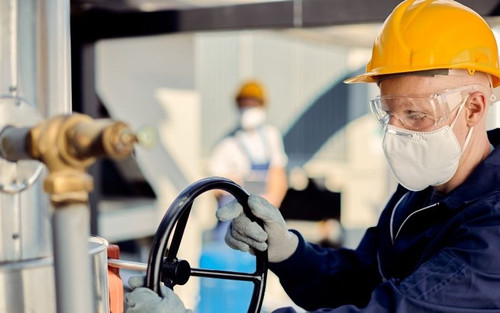What Kind of Ventilation is Needed for a Confined Space?
Confined space entry comes with plenty of risks. Basements, storage areas, attics, crawl spaces, sewers, tunnels, and other confined spaces reduce the flow of oxygen, which makes it hard to breathe. That’s why you need to install some form of ventilation to increase the airflow. But not all confined spaces are created alike. There’s a simple formula you can use to figure out exactly how much confined space ventilation is needed while occupying a space. Learn how to protect yourself and your crew in these tight situations. Use this guide to find the right amount of ventilation for confined spaces.
Inspecting the Confined Space
Before occupying the space in question, take a few moments to inspect the surroundings. A confined space is an area that’s unfit for human occupation. There may be toxic chemicals and gases floating through the air. The lack of oxygen can also put your health at risk.
Use a gas detection monitor to test the air for hazardous gases. According to the Occupational Safety and Health Administration (OSHA), workers aren’t allowed to enter the space if these gases are present. They will have to use a respirator while occupying the space. OSHA also requires ventilation in confined spaces while occupying to eliminate atmospheric hazards.
Confined Space Ventilation
When adding ventilation, use confined space blowers and fans. Unlike the kinds of fans and blowers you might see at your local department store, these items are specially designed to increase ventilation in confined spaces. They work by blowing fresh air into the confined space while removing hazardous toxins from the air.
The blower usually comes with a duct that goes inside the confined space. It’s best to position the duct as deep into the space as possible so the fresh air will reach the entire area. The body of the blower will stay outside the confined space. If you are working in a tunnel with multiple curves and bends, you may need to use more than one blower to reach every corner of the space.
When starting the machine, let it run for a few minutes to give the air a chance to clear out. Test the space again for hazardous gases before occupying the space. Leave the blower running the entire time you are inside.
Choose a blower that meets your needs. You may want to use a portable, gas- or battery-powered blower when working on the go. However, make sure they will last the duration of your shift. Go with an electric blower that plugs into the wall for lasting ventilation.
How Much Ventilation Do You Need?
You will need to calculate the proper cubic feet per minute (CFM) for the space. Start by measuring the square footage of the confined space. Every state sets requirements for air exchanges per hour (ACH), which tells you how many times the air needs to turnover every hour. If your state has an ACH minimum of 5, that means the air needs to be replaced five times every hour. Multiply the total square footage by the ACH to get the total exchange rate. Then divide this number by 60 to get the CFM. Check the blower to make sure it provides the necessary CFM. Remember that turns, corners, bulky equipment, and even the ducts themselves can further restrict airflow, so be sure to include these in your calculations.
Contact PK Safety for more information about ventilation or our confined space kits.
Recent Posts
-
Customizing Gas Detectors: Tailoring Solutions to Fit Your Unique Requirements
In today’s diverse industrial landscape, a one-size-fits-all approach to safety simply doesn’t cu …Jul 3rd 2024 -
10 Ways to Prevent Wildfires
You can prevent wildfires by extinguishing flames before you leave the worksite. Avoid practicing …Jul 1st 2024 -
ANSI/ISEA 138 Safety Gloves: Ensuring Hand Protection
The human hand is an anatomical masterpiece and arguably the greatest tool attached to our bodies …Jun 25th 2024





